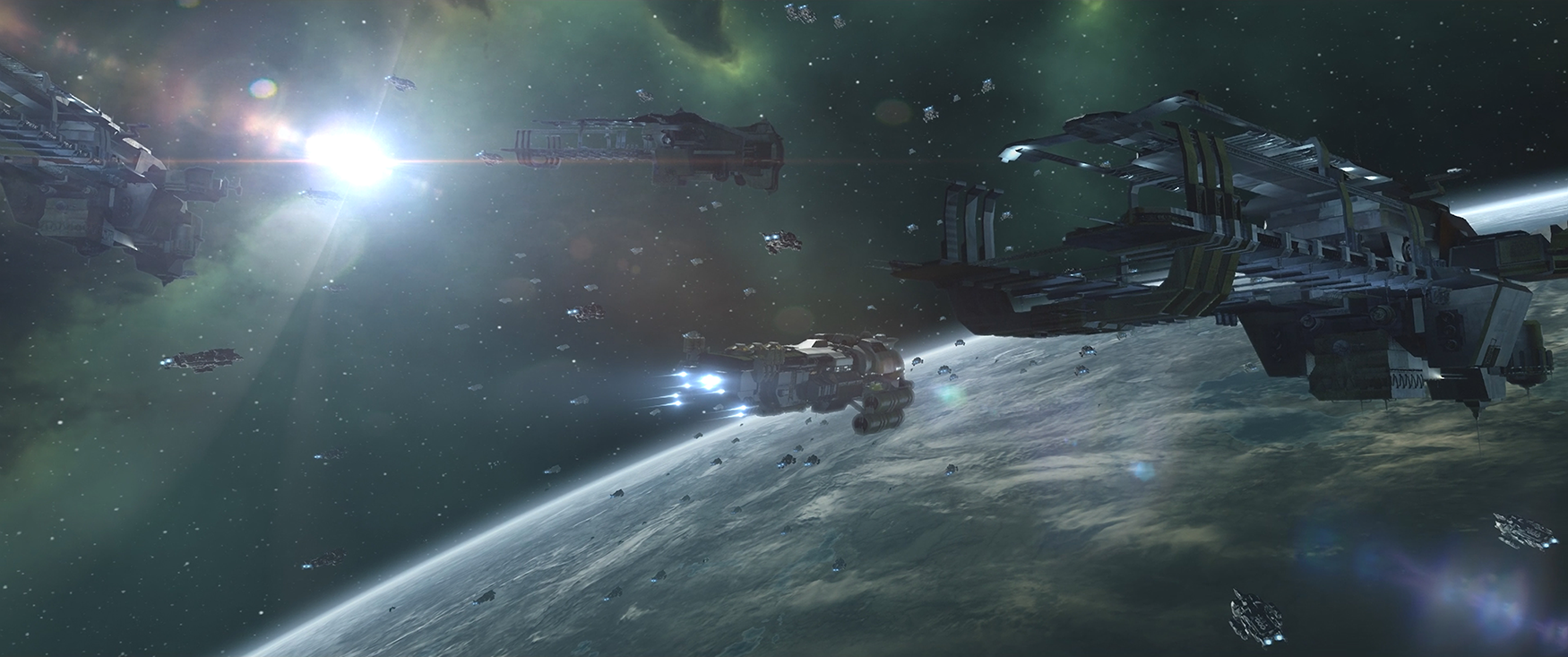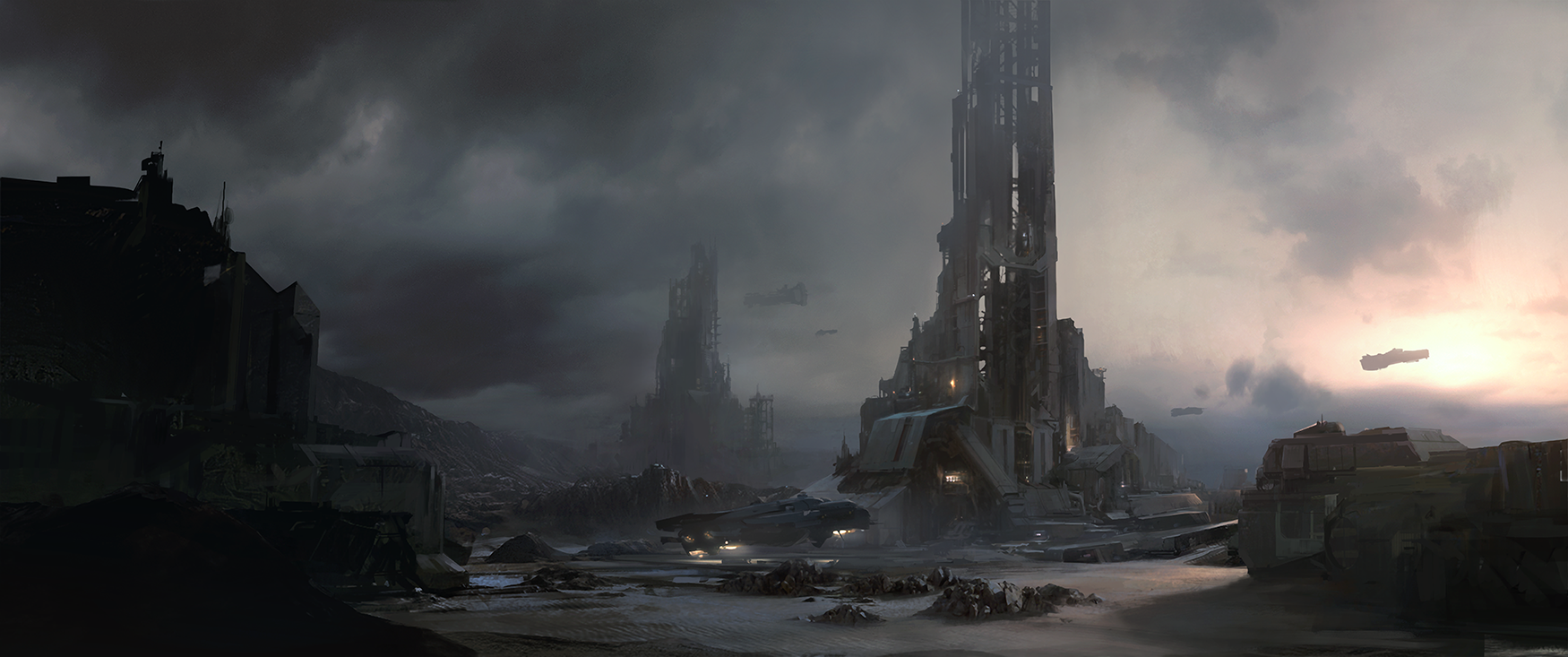Origins
I have always found it remarkable that despite the vastness and breadth of this universe, we are all fundamentally so much the same—capable of such deep and genuine love for our nearest, and such astounding cruelty to those on the other side of whatever divide we choose to carve out next to ourselves. We make art of such beauty that it blinds the eye, and wage wars of such ugliness that they blind the soul.
Every place thus far inhabited by our species has been fractured by veins of discord, ultimately crumbling beneath the weight of our hatred. And yet, through a combination of blind providence and technological progress, we continually find new havens to sustain us. New Eden is mankind’s latest such garden, one more chance to light the dark of space with motes of hopeful civilization. Would that we could dream it won’t be our last.
— Dr. Damella Macaper,
The Seven Events of the Apocalypse
Exodus
In the year AD 7987, roughly fifteen thousand years ago, the colonized universe was plagued with strife. Overpopulation and scarcity of natural resources had caused a great deal of conflict among the nations of humanity. It was against this backdrop that explorers on the astral frontier chanced to witness the opening of a natural wormhole. Not long after, compelled by their dire circumstances, a team of scientists and specialists from several nations mounted the first manned expedition through the portal. On the other side, several habitable worlds lay ripe for the taking.
Within a few years, all of humankind’s spacefaring nations had sent settlers through the wormhole. The site itself caught on with the public, quickly acquiring an aura of myth and wonder in popular culture. Upon his return from the first voyage, the leader of the pioneering research team gave a speech in which he proclaimed humanity to be “on the eve of a second genesis.” From then on, the gate would be known as EVE.
A small, fervently religious sect known as the Conformists was among the first of the independent settler teams to venture through. In a historic interview, their leader, Dano Gheinok, christened the system beyond the wormhole “New Eden.” The system’s official name was CMS-48, but Gheinok’s moniker captured the imagination of the common man. Today, the name refers to the entire cluster of stars beyond the wormhole.
In the decades that followed, mass colonization took place in New Eden. Gigantic construction ships sailed light years toward uncharted stars, where they constructed star gates so their smaller brethren might follow. For three generations, humanity spread far and wide within this new star cluster, flourishing within the virgin territories. Technology and industry prospered, and the sprouts of new culture began to grow in the burgeoning territories. Just as it seemed humanity was on the cusp of a brighter future, disaster struck.

Paradise Lost
On the twentieth of February in the year AD 8061, seventy-two years after it was first glimpsed by eager eyes, the New Eden sun bore witness to one of the greatest catastrophes in the history of mankind. Shortly after midnight, making a routine run around the perimeter of the EVE Gate, a patrol ship reported strange phenomena surrounding the wormhole. Small pockets of gravitational fluctuation buffeted the ship, while its sensor systems and navigational equipment suffered sporadic interference.
Not long afterward, a deafening hiss overtook the communications channels of every ship in the immediate vicinity. As the hiss grew to a pitched scream, the gravitational forces around the wormhole began to swirl toward a single point. Seconds later, a cataclysmic blast of energy spiraled out from the tunnel, annihilating everything in its path.
Gradually, colonists discovered that the star gates connecting their territories with the New Eden system had all suffered strange electrical malfunctions. Colony leaders on the frontier immediately ordered scouts back to investigate. When the first of these made their way back to the site of the wormhole, the true extent of the damage was revealed: the wormhole had collapsed upon itself, leaving only a dead singularity at its core.
The Dark Ages
As panic spread among the newly isolated colonies, individual leaders used a number of methods to quell the unrest. Many of them instigated martial law, while others enacted social programs to assure their colonies’ sustainability. Despite good intentions, few of these colonies possessed the needed resources or infrastructure to be self-sufficient.
In the years that followed, rioting and civil war wracked the colonies. Conflict and starvation claimed the lives of vital experts, who left no successors to their knowledge. Terraforming operations stopped dead in their tracks. Crucial equipment fell into disrepair, then ruin. Subsistence became the standard. Progress was rendered a distant dream. Separate worlds lost contact, and eventually their memories of each other vanished behind the veil of time. One by one, the majority of New Eden’s fledgling colonies quietly marched into unhallowed extinction.
And yet, a few resilient colonies managed to hang on, passing down basic trades from generation to generation. As decades turned to centuries and centuries to millennia, the shroud of legend fell over humankind’s origin.

Rebirth
Gradually, colonies that shared the same planets came to find each other. Technologies crucial to space exploration were invented anew. New planets were settled and new star gates built, and over the span of several epochs—through countless wars, pacts, treaties, trade agreements, and other deals of state—five distinct civilizations emerged.
The Amarr Empire are a vast theocracy supported by a broad foundation of slave labor, fully assured of their own position as the chosen children of their one true god. The Caldari State are a militaristic corporate-run meritocracy who regard honor and duty to be the highest ideals one can aspire to. The Gallente Federation is a nation of hedonistic libertines, compassionate and cunning in equal measure.
The Minmatar Republic is a tribal republic of warrior poets and artisans, fiercely proud and individualistic. The Jove are a mysterious race of highly advanced genetic manipulators. After coming into contact with each other, these five civilizations founded a regulatory agency that would become an emblem of peace and cooperation between them. This institution was named CONCORD.
The world of New Eden today is a grim universe as well as a beautiful one, fraught with danger and rich with opportunity, torn by conflict and treachery. It is a world at a crossroads, where a dominant new breed of human being, effectively immortal, threatens to irrevocably upset the balance of power. Embroiled in constant economic and military conflict, these immortals fight for wealth and glory on the lawless boundaries of the universe, while the millennia-old empires try their best to carve out their own slices in the face of a rapidly emerging new world order.
See Also

